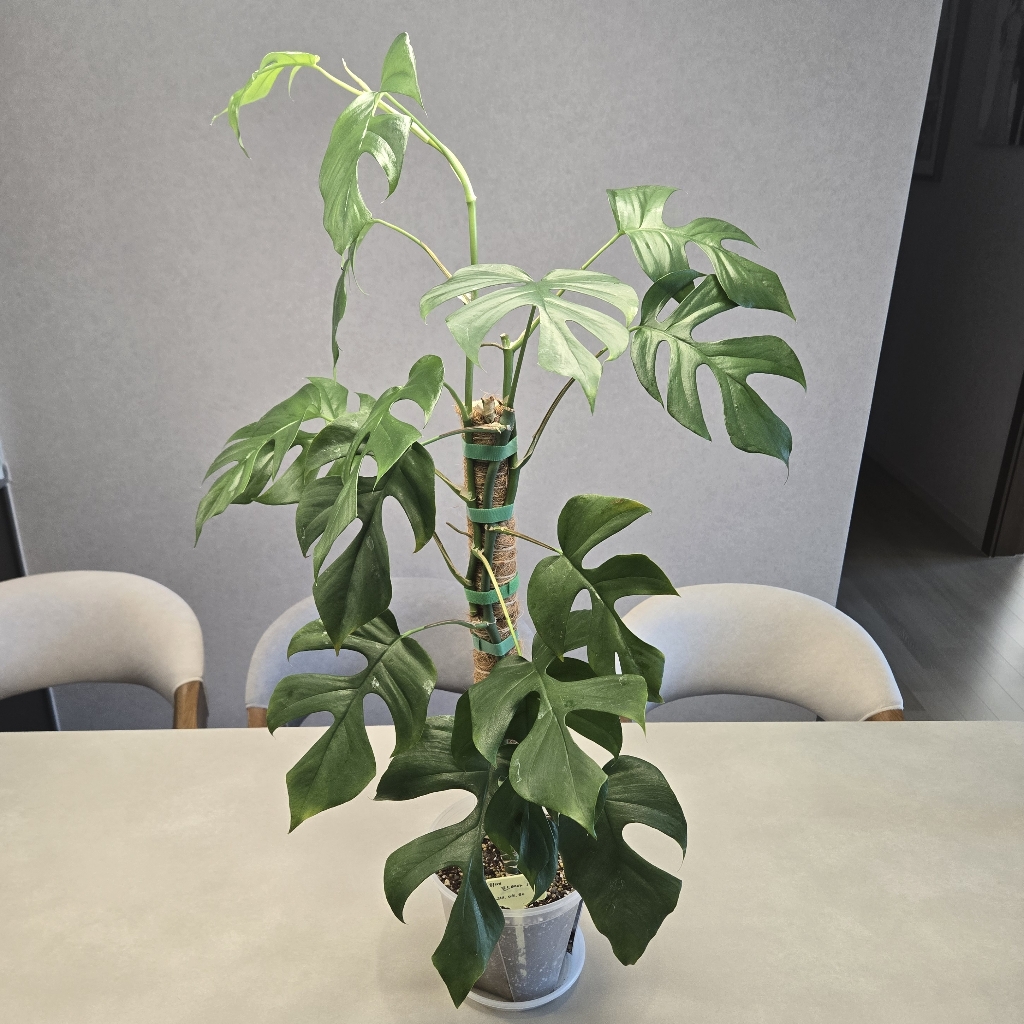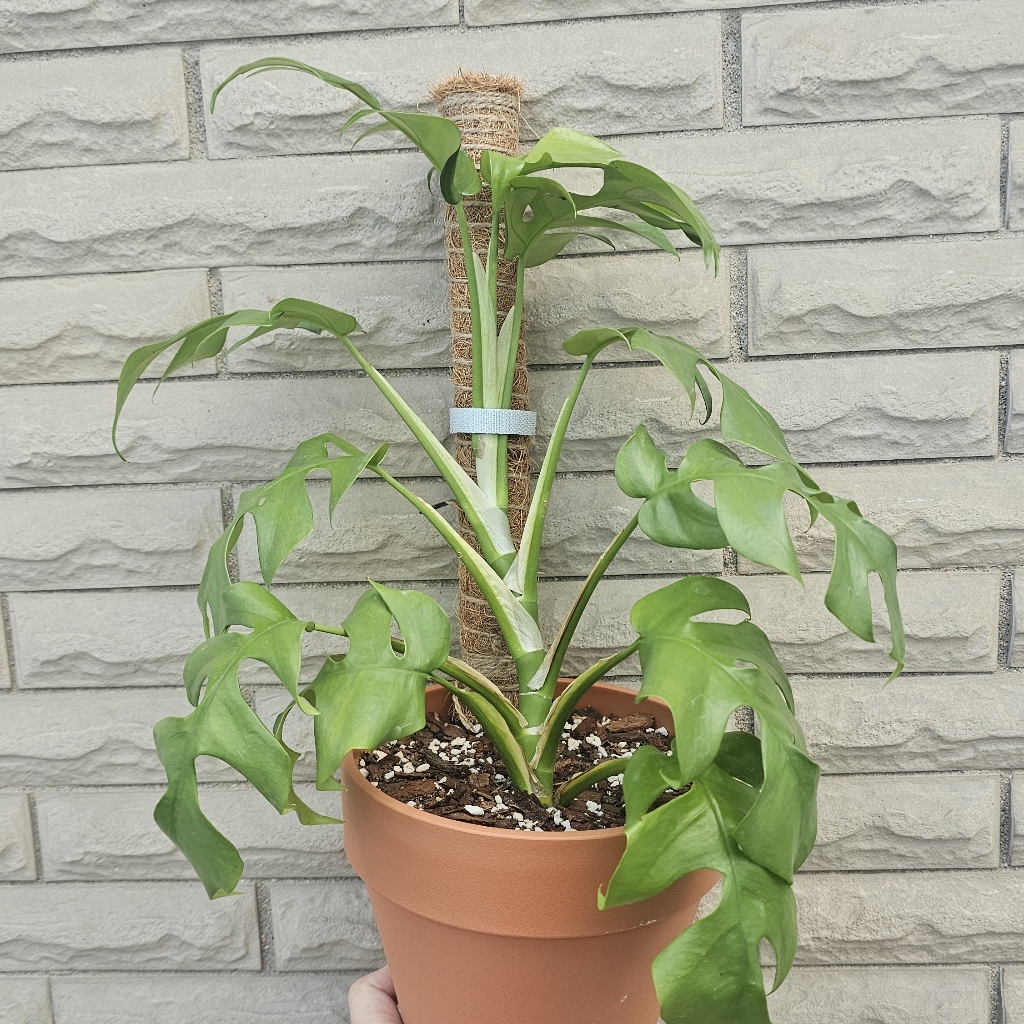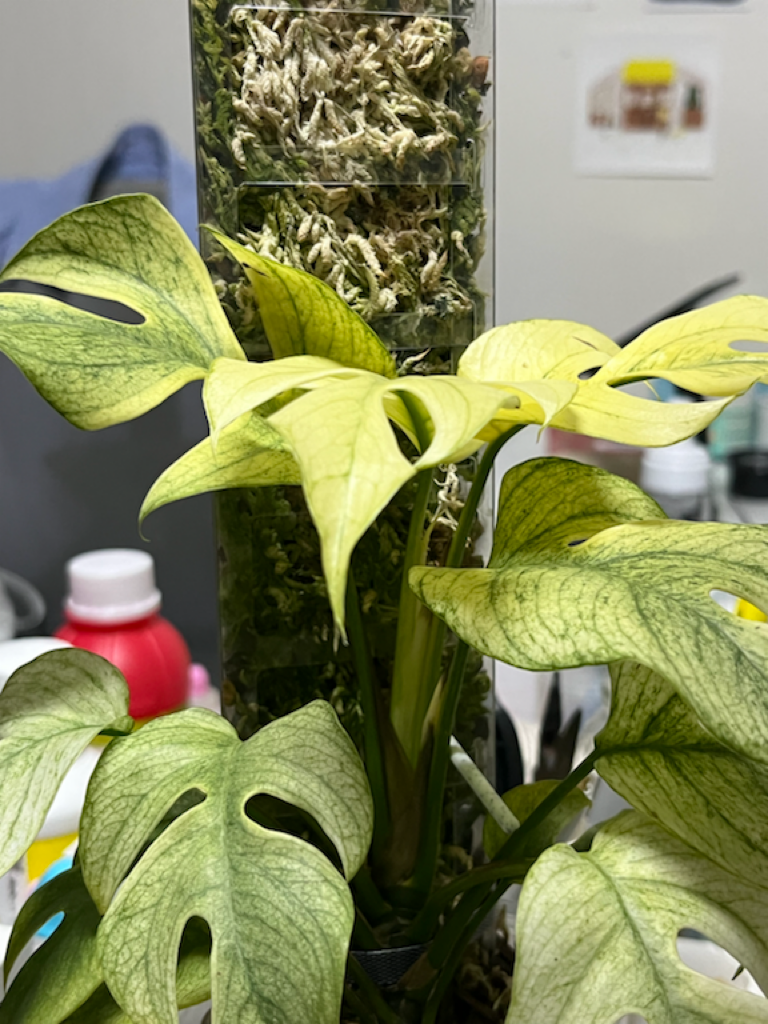How to grow and care for Rhaphidophora Tetrasperma
plant care guide about watering, fertilizing, trimming, repotting, cutting, propagating Rhaphidophora Tetrasperma
Rhaphidophora Tetrasperma 101 - Plant Care Instructions
Bright direct light
16C° ~25C°
Every 7 days
Growth Observation wiki
Botany Encyclopedia
Family : Araceae
🌺 Flower
It has a thick, fleshy flower stalk with densely clustered, stemless flowers. This flower arrangement is called a spadix.
Species : Rhaphidophora Tetrasperma
🔖 Care Tips
The plant is known for its tearing leaves, which typically appear after 6-8 young leaves have grown. As the leaves grow larger, they tear more easily. When torn leaves emerge, older leaves turn yellow and fall off due to aging. A thick stem supports the growth of larger leaves, so consider this when selecting a plant. Variegated leaves have uncertain patterns and are sensitive to environmental changes, making them prone to rot. To prevent this, wipe off water from the leaves with a dry cloth or ensure good air circulation. Guttation, common in tropical plants, occurs mainly at night when excess moisture is expelled from the leaves. This is natural, but if observed, reduce watering as the plant has ample moisture.
🏝️ Habitat Conditions
It originates from the tropical rainforests of Southeast Asia. It thrives in hot and humid environments. It is best to maintain it in warm and humid conditions.
🪨 Soil Mix
It is best to plant in well-draining soil. A common mix ratio is 40% potting soil, 20% bark, 20% leaf mold, 10% perlite, and 10% charcoal. This can vary depending on conditions and environment.
🌡️ Environment
Maintain a temperature of 20-25°C, with a minimum of 13°C. Keep humidity between 50-80% for best results. Ensure good air circulation to prevent mold and pests, even in high humidity.
👀 Characteristics details
As a climbing plant, it's advisable to install a support to prevent the stems from bending or breaking. This plant develops aerial roots from its stems. If they are unsightly, you can remove them with sterilized tools, but it's recommended to leave them. When these roots touch the ground or water, they can develop fine roots to absorb moisture and nutrients, and also provide support if the plant leans. The leaves are broad and may collect dust, which can hinder photosynthesis, so it's good to wipe them regularly. Although it resembles Monstera deliciosa and is often mistaken for it, this plant is not a Monstera species. However, it shares a similar ecology and is smaller, earning it the nickname "mini Monstera." It's a good choice if you want a Monstera-like plant in a small space.
☀️ Light
Avoid direct sunlight and ensure the plant receives ample indirect light for extended periods. Variegated leaves cannot photosynthesize as effectively, so they require more light. However, strong light can damage these leaves, so it's best to provide them with gentle light for longer durations.
💧 Water
It is best to water thoroughly when the surface soil is dry. Since the roots are delicate and can easily suffer from overwatering, always check the soil condition before watering.
🌱 Propagate
To propagate houseplants, separate the growth point along with leaves and aerial roots for cuttings. 1. For water propagation, avoid using a transparent container. Place the stem in water, and once roots appear, add hydroponic fertilizer. When roots are 5-7 cm long, transfer to soil. 2. For soil propagation, plant deeply in soil without fertilizer. After taking cuttings, avoid exposing them to bright light. Gradually increase light exposure to help them adapt to gentle light. Maintain high humidity and a temperature of 20-25°C.
🪴 Repot
Repot in spring every 1-2 years due to its relatively fast growth rate.
💊 Fertilize
During the growing season from spring to summer, using fertilizer according to the recommended amount can promote more vigorous growth. It is best to avoid fertilizing immediately after repotting and wait 2-4 weeks before applying fertilizer.
water
How to water Rhaphidophora Tetrasperma
How often should I water?
check Rhaphidophora Tetrasperma Every 7 days if it needs water when it’s very cold (below 5℃), water less frequently
When do I need to water?
the top 2-3 inches of soil is dry
Light & Location
How much light does a Rhaphidophora Tetrasperma need?

Bright direct light
Bright indirect light
Grow light
Light preference
Rhaphidophora Tetrasperma likes Bright direct light, Bright indirect light, Grow light day. The brighter the space, the better this plant grows.
Check if there’s an optimal place in your house!
This plant prefers
2K ~ 20K lux to thrive!
0
20K~
2K
20K
Temperature
Houseplants
-15
16~25℃
45
Plants that grow in the wild and those that grow indoors prefer different temperatures. If you grow Rhaphidophora Tetrasperma at home, make sure the temperature is 16~25℃.
Humidity
Ideal humidity
0
40~70%
100
Rhaphidophora Tetrasperma prefers humidity about 40~70%. If necessary, increase humidity by misting, humidifier.
Fertilize
Collective Knowhow
When should I fertilize?
Only when your plant is healthy
How frequently should I fertilize?
1-2 times in growing season. A pinch for a small pot.
Characteristic
The taxonomic classification of Rhaphidophora Tetrasperma is as follows. - Kingdom: Plantae, Phylum: Tracheophyta, Class: Liliopsida, Order: Alismatales, Family: Araceae, Genus: Rhaphidophora, Species: Rhaphidophora Tetrasperma
| Characteristic Name | Characteristic Value |
|---|---|
| Habitat | Asia |
| Taxonomy Name | Taxonomy Value |
|---|---|
| Phylum | Tracheophyta |
| Class | Liliopsida |
| Order | Alismatales |
| Family | Araceae |
| Genus | Rhaphidophora |
| Species | Rhaphidophora Tetrasperma |
Is your plant sick?
Track what happened. We’ll let you know the cause and treatment shortly!





1:1 Expert Help
You’ll get professional feedback within 24 hours from an expert on our team.
feedback will include




















